01.02.03 Basic UI - Forge 03 - Sample Use Case - Basic UI 02 - One to Many
Sample Use Case - Basic UI 02 - One to Many
Let’s add two new Entities
[simple-concise-forge]$ jpa-new-entity --named Container
***SUCCESS*** Entity mx.rmm.simpleconcise.forge.model.Container created
[Container.java]$ jpa-new-field --named code
***SUCCESS*** Field code created
[Container.java]$ constraint-add --onProperty code --constraint NotNull
***SUCCESS*** Constraint NotNull successfully configured
[Container.java]$ jpa-new-field --named description --type String
***SUCCESS*** Field description created
[Container.java]$ constraint-add --onProperty description --constraint NotNull
***SUCCESS*** Constraint NotNull successfully configured
[Container.java]$ jpa-new-entity --named Item
***SUCCESS*** Entity mx.rmm.simpleconcise.forge.model.Item created
[Item.java]$ jpa-new-field --named code --type String
***SUCCESS*** Field code created
[Item.java]$ constraint-add --onProperty code --constraint NotNull
***SUCCESS*** Constraint NotNull successfully configured
[Item.java]$ jpa-new-field --named description --type String
***SUCCESS*** Field description created
[Item.java]$ constraint-add --onProperty description --constraint NotNull
***SUCCESS*** Constraint NotNull successfully configured
To add the N-1 relation from Item
[Item.java]$ jpa-new-field --named container \
--type mx.rmm.simpleconcise.forge.model.Container \
--relationshipType Many-to-One \
--inverseFieldName items \
--required \
--fetchType EAGER
And generate templates only for Container and Item
[Item.java]$ scaffold-generate \
--targets mx.rmm.simpleconcise.forge.model.Container \
mx.rmm.simpleconcise.forge.model.Item \
--overwrite
***SUCCESS*** Scaffold was generated successfully.
Our structure looks like this
simple-concise-forge/
├── pom.xml
├── src
│ ├── main
│ │ ├── java
│ │ │ └── mx
│ │ │ └── rmm
│ │ │ └── simpleconcise
│ │ │ └── forge
│ │ │ ├── model
│ │ │ │ ├── Catalogue.java
│ │ │ │ ├── CatalogueStatus.java
│ │ │ │ ├── Container.java
│ │ │ │ └── Item.java
│ │ │ └── view
│ │ │ ├── CatalogueBean.java
│ │ │ ├── ContainerBean.java
│ │ │ ├── ItemBean.java
│ │ │ └── ViewUtils.java
│ │ ├── resources
│ │ │ └── META-INF
│ │ │ ├── persistence.xml
│ │ │ └── validation.xml
│ │ └── webapp
│ │ ├── catalogue
│ │ │ ├── create.xhtml
│ │ │ ├── search.xhtml
│ │ │ └── view.xhtml
│ │ ├── container
│ │ │ ├── create.xhtml
│ │ │ ├── search.xhtml
│ │ │ └── view.xhtml
│ │ ├── error.xhtml
│ │ ├── index.html
│ │ ├── index.xhtml
│ │ ├── item
│ │ │ ├── create.xhtml
│ │ │ ├── search.xhtml
│ │ │ └── view.xhtml
On the main page there are a couple of new elements, Container and Item as expected.
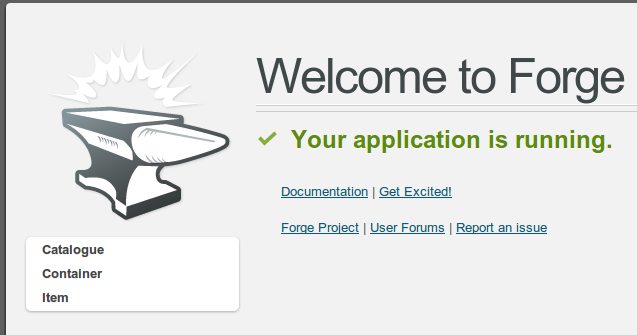
The home page of Container is pretty much the same as in sample 01 with a filter section and a results table.
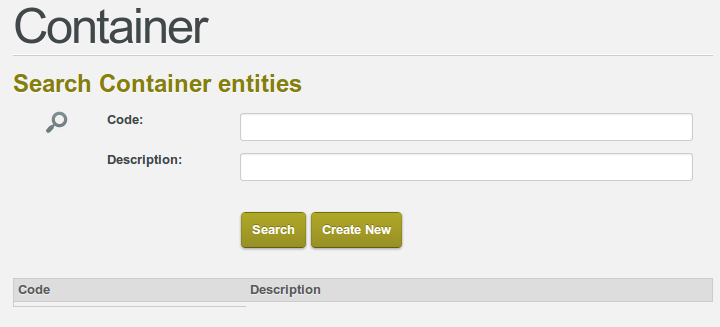
On creating a new Container we start to see differences with a specialized section that allows to register items.
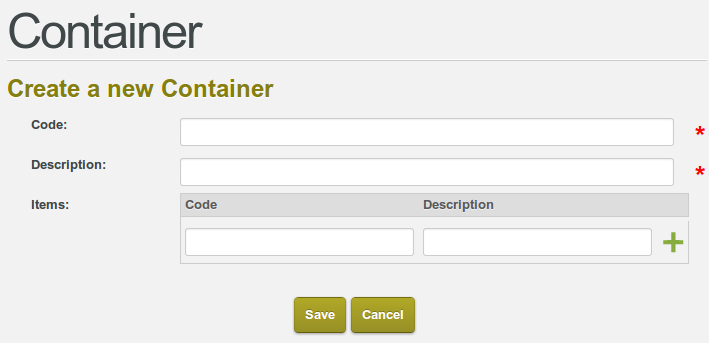
Let’s add a simple Container with no contents
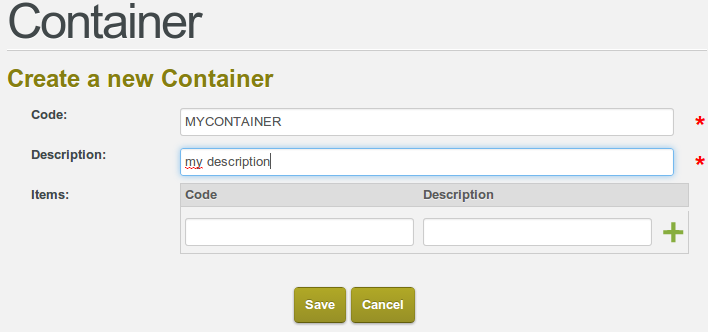
On the homepage of Container we can see our new container
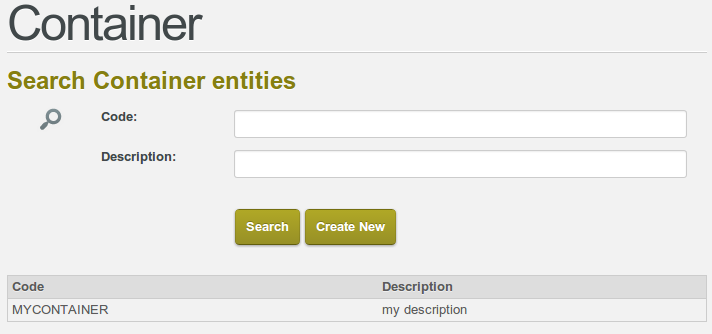
Drilling on our container we can see the details and launch an edit action
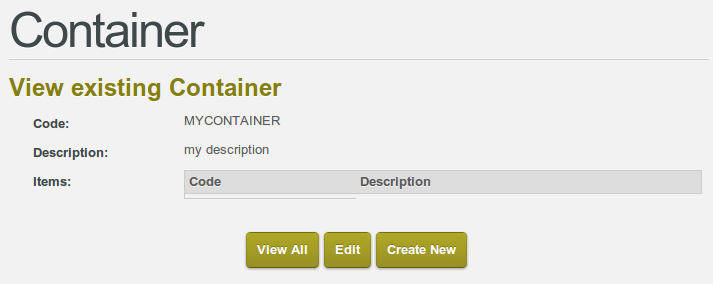
Let’s add a new item and press (+) button on the gui
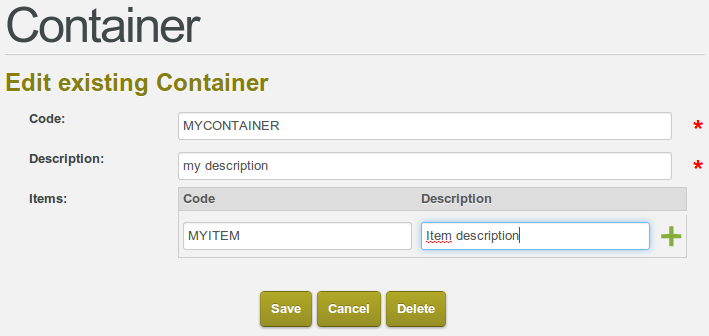
We see the new item and a new button to remove it. Proceeding with our example let’s press save.
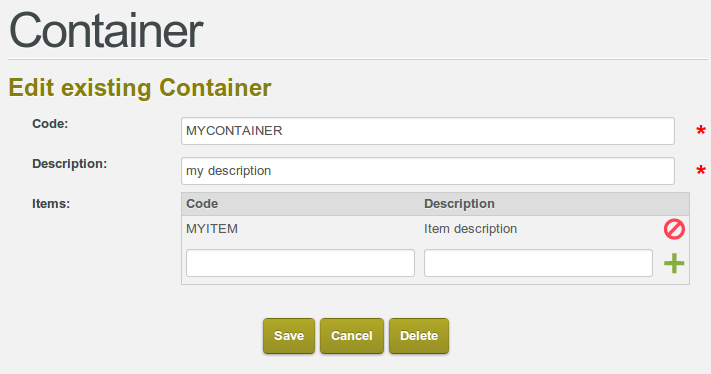
We are back on Container detail page and the new Item is visible.
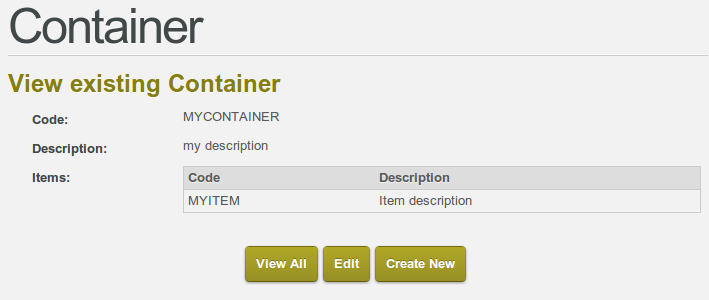
If we go to the Item homepage we already see the Item that we added to our first container.
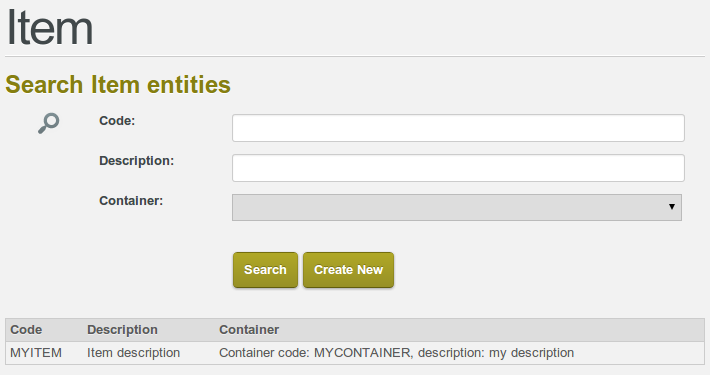
When creating another item we are prompted to select an Existing Container
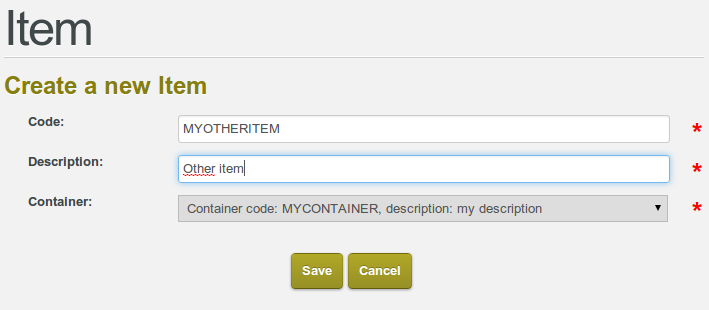
Now we have 2 items associated with the same container
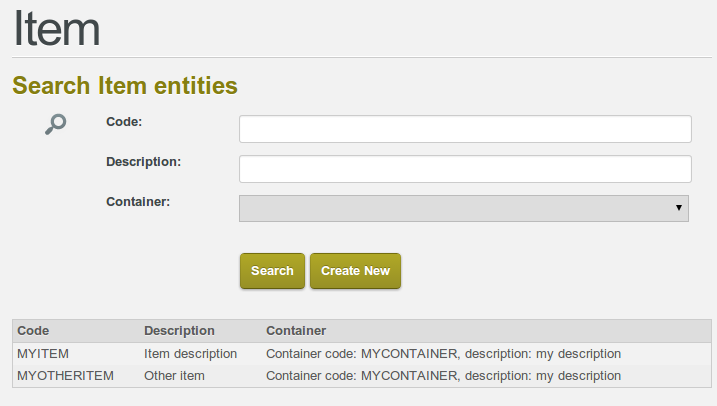
If we drill down to detail page of the last created item we can see a link that allows us to see the detail of the related container
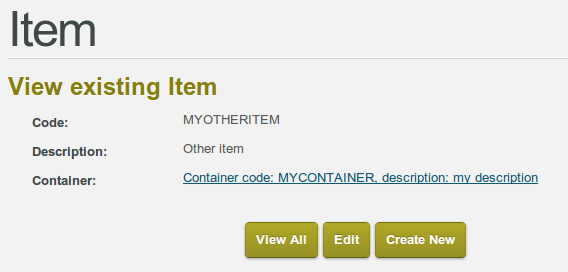
Which in turn allows us to see both items and we are able to navigate between both entities in a simple way.
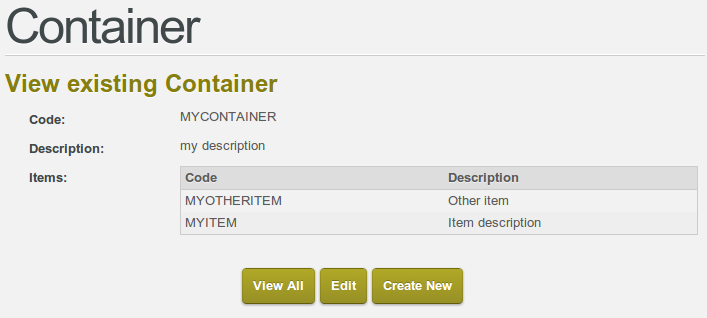
Simple as that. In my experience constructing a webapp for a 1-n relation is error prone and very tedious; we have built an app that can cope with the original requirements with almost no effort.
- Create Container
- View Container details
- Modify Container details
- Add Item to Container
- View Item details
- Modify Item details
- Remove Item from Container (deleting such item as a side effect)
- Delete Container (deleting items as a side effect)
Current metrics
.java
1458 total
.xhtml
844 total
.xml
173 total
This is pretty nice for 2 Kloc and perhaps you are begining to see where I’m going with this.
You can find source code here
Let’s continue with our complicated example